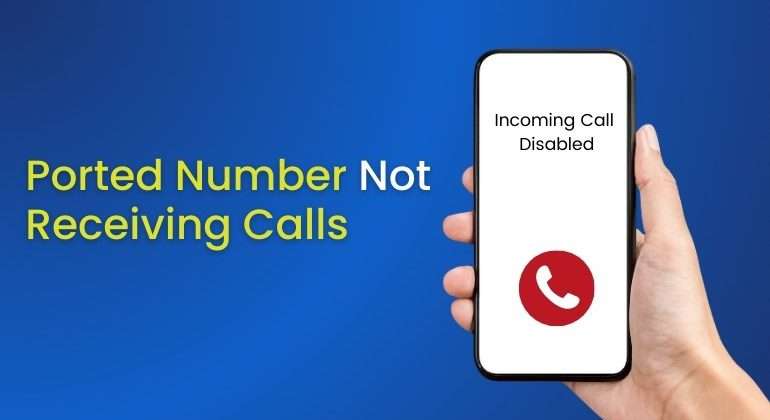Porting numbers are very common and beneficial for anyone who wants to upgrade their network with better quality and fast data speed. With no hassle of changing your number and opting for a prepaid or postpaid plan of your choice, porting a number is always a great choice!
However, many times, you may face many issues like ported numbers not receiving calls or having issues like interrupted calls and call drops. In that case, one has to delve deep into the matter and understand the cause of the same so that suitable action can be taken.
Read on to find out about the reasons for this issue!
Table of Contents
Switched Carriers and Not Receiving Calls – Reason
Sometimes after porting a number, you may receive calls on the gaining carrier and also on the losing carrier, which indicates a partial port. To complete the process of porting the number of carriers, use two routing methods.
The LNP System
Almost all carriers use the Local Number Portability System (LNP) for inter-carrier calling. This allows the original carrier to check which carrier owns the original number and the ways to route them. Every country has a central authority that looks after this matter.
Whenever the number is ported, the FCC has to register some documents to state their ownership of the number. After approval, the information about the ownership is communicated to the rest of the telephone network. Sometimes, the gaining carrier also informs the losing carrier that the number has been successfully ported to their network.
Some networks also use a PIN system so that both carriers know that the port-out is taking place.
Translation Tables
When information of a call reaches a carrier’s network, the carrier uses the destination number in their database, which is termed as ‘Translation Tables’. These tables have a record of the number they own and how to route them. That’s why these are called translation tables.
If the number is in their records and belongs to them, they don’t do the LNP method and route the call immediately. In case the number doesn’t match, an LNP run is done to see where the call should be routed.
How Issues Can Occur?
When you get clarity from the LNP order, the translation tables of both carriers should be updated, i.e. the losing carrier should remove the number from the database and the gaining carrier should update the number in their records. However, when this doesn’t happen issues start occurring!
When the losing carrier doesn’t remove the number from the translation tables,
- The losing carrier’s customer may call a ported number.
- The losing carriers don’t start the call but act as an intermediate platform for the call to a ported number.
Because of this condition, the call crosses the carrier losing the carrier’s domain and overrides the LNP routing. In this situation, the call gets diverted to the old system and may not go through at all! Apart from this, other issues are –
- It may take 24-48 hours in the transition when the number is fully ported after the LNP standards.
- The losing carrier lacks an automated system to synchronize LNP and translation tables.
- The gaining carrier fails to inform the losing carrier that it has lost the number.
- The losing carrier has been informed about the port-out but made some clerical error.
Solution—Ported Numbers Not Receiving the Calls
Once you’ve understood the problem, it is better to focus on the solutions. In case you switched carriers and are not receiving calls, here’s what you can do!
Wait for 48 Hours
One has to understand that porting a number generally takes a time of 24-48 hours. Even if you are experiencing issues with calls, wait for at least 48 hours to take further action, if the problem persists. Porting is done when the losing carrier removes the number from the translation tables and the gaining carrier adds the number in their database after LNP standards.
Contact Losing Carrier
Even after waiting for 48 hours, if your ported number is not receiving calls, you should contact the losing carrier to get these issues resolved! The losing carrier can check on their end to find out if they lack an automated system to get along with LNP and translation tables.
Conclusion
Porting a phone number is highly convenient as it allows you to expand into new markets and reach out to new customers easily. It also allows you to upgrade your mobile plans and lets you enjoy the perks without changing your original number. However, you may face an issue when the ported number does not receive calls, the main reason could be the misinformation between the losing carrier and the gaining carrier.
These issues can be easily resolved if you get in touch with your lost carrier as they can analyze whether the information about the port-out has been updated in their translation tables. Once done, enjoy your new carrier network!
FAQs
How will I know if my number has been ported?
Once your number is ported successfully, you’ll be informed through a message. Once you receive the message, try calling from your phone and if the call goes through it means that the porting is successful!
Can I use my number while it's being ported?
Yes, during the porting process, your number will remain active, and you can call anyone using the losing carrier network till the day your phone has been ported completely. You will be informed if the porting is successful through a message.

